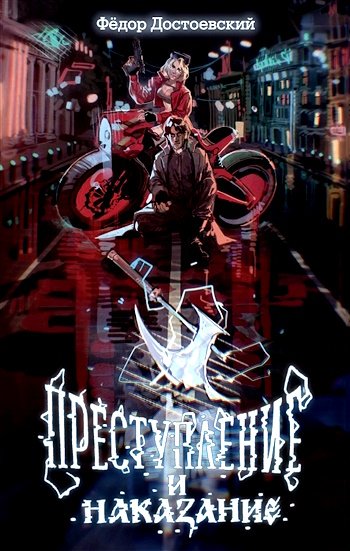33. Rentschler, Ministry of Illusion, 216 –217.
34. Heide Schlüpmann, “Faschistische Trugbilder weiblicher Autonomie,”
Frauen und Film 44/45 (1988): 59.
35. On the concept of the nonrepresentational sign see Richard Dyer, “Entertainment and Utopia,” Genre: The Musical, ed. Rick Altman (London: Routledge and Kegan Paul, 1981), 177.
36. Film music, wrote Hermann Wanderscheck in 1942, “can compete with the soul of the image—the image remains silent, but music resounds, roars, paints, rings out in major and minor keys, spreading itself out like a rug over the image or flickering upward like a flame to provide the most powerful expression of redemption and liberation.” Spoken dialogue in many Nazi films, likewise, wants to roar, paint, and ring out in different keys in order to cue the spectator’s dreaming. Hermann Wanderscheck, “Die Macht der Musik im Film,” Film-Kurier, January 19, 1942; qtd. and trans. in Rentschler, Ministry of Illusion, 387.
37. A good case in point would be the 1937 UFA production Patrioten (Karl Ritter), which tells the story of a World War I ace stranded behind French enemy lines. The film replays constellations typical for many much earlier Nazi feature films: the rewriting of World War I; the displaced German’s quest for a return to his native soil; the desire to turn one’s back on foreign cultures, images, and sounds. Strangely enough, however, not only do the French in this film speak perfect high and regional German, but the narrative also systemat-ically omits any reference to the dilemma of a German forced to navigate foreign linguistic territory. Although he pretends to be mute first, later we witness the hero easily communicating with his enemies—as if no language barrier existed. Patrioten envisioned the many accents of the German language as a European lingua franca. It remade French culture in the name of regional Germanic linguistic properties.
38. Marc A. Weiner, Richard Wagner and the Anti-Semitic Imagination (Lincoln: University of Nebraska Press, 1995), 103 –194.
39. Klaus Kreimeier, “Von Henny Porten zu Zarah Leander. Filmgenres und Genrefilm in der Weimarer Republik und im Nationalsozialismus,” montage/av 3, no. 2 (1994): 42.
40. Michel Chion, Audio-Vision: Sound on Screen, ed. and trans. Claudia Gorbman (New York: Columbia University Press), 131.
41. Filmmaking, Rósza claimed, “is a composite art, a Wagnerian Gesamtkunstwerk, and film music should be written in that way” (qtd. in Caryl Flinn, Strains of Utopia: Gender, Nostalgia, and Hollywood Film Music [Princeton: Princeton University Press, 1992], 13); and Steiner did not hesitate to add, “If Wagner had lived in this century, he would have been the Number One film
10-C2205-END 8/17/02 3:39 PM Page 279
Notes to Pages 38 – 43
/
279
composer” (qtd. in Tony Thomas, Music for the Movies [New York: Barnes, 1973], 122).
42. See Theodor Adorno and Hanns Eisler, Composing for the Films (London: Athlone Press, 1994), 135–157.
43. Flinn, Strains of Utopia, 34.
44. Helga Belach, ed., Wir tanzen um die Welt: Deutsche Revuefilme, 1933 – 45 (Munich: Hanser, 1979).
45. Ursula Vossen, “Die große Attraktion: Opern- und Operettensänger im deutschsprachigen Tonfilm,” in MusikSpektakelFilm, 105–122.
46. Adorno and Eisler, Composing for the Films, 114 –133.
47. See Die Musik 28 (1936): 721.
48. Wolfgang Liebeneiner, “Die Harmonie von Bild, Wort und Musik im Film,” Film-Kurier, March 13, 1939, 4 –5. On Liebeneiner’s considerable influence on Goebbels see Moeller, Der Filmminister, 144 –148.
49. Liebeneiner, “Die Harmonie,” 5.
50. Liebeneiner’s argument in this respect clearly resonated with Béla Balázs’s thoughts on sound film in his 1930 Der Geist des Films. Like Liebeneiner Balázs valorized the coloratura of language over its logic and meaning: “The human’s sound in film is more interesting than what he has to say. Even in film dialogue, the acoustical-sensual impression is more important than the content.”
Unlike Liebeneiner and other Nazi film theorists, however, Balázs did not seek to ground the voice’s sound in ethnic definition of national identity. Béla Balázs, Schriften zum Film, ed. Helmut H. Diederichs and Wolfgang Gersch (Munich: Hanser, 1984), 2:165; see also Jürgen Kasten, “Vom Visuellen zum Akustischen Sprechen: Das Drehbuch in der Übergangsphase vom Stumm- zum Tonfilm,”
Sprache im Film, ed. Gustav Ernst (Vienna: Wespennest, 1994), 41–56.
51. Liebeneiner, “Die Harmonie,” 5.
52. Ibid.
53. Richard Wagner, “What Is German?” in Prose Works, trans. William Ashton Ellis (New York: Broude Brothers, 1895), 4:160.
54. It was only after 1939, as Pamela Potter has shown, that musicologists were able to solve many of their ideological dilemmas: “Territorial gains during World War II then inspired musicologists, in a sense, to ‘annex’ the musical achievements of subjugated countries and claim them as German” (Pamela M.
Potter, Most German of the Arts: Musicology and Society from the Weimar Republic to the End of Hitler’ s Reich [New Haven, Conn.: Yale University Press, 1998], xvii, 200 –234). See also Pamela M. Potter, “Did Himmler Really Like Gregorian Chant? The SS and Musicology,” Modernism/Modernity 2, no. 3
(1995): 45– 68.
55. Richard Traubner, “Operette als Stoff und Anregung: Entwicklungen im Musikfilm, 1907 –1937,” in MusikSpektakelFilm, 21.
56. Rentschler, Ministry of Illusion, 117.
57. See, e.g., Michael H. Kater, Different Drummers: Jazz in the Culture of Nazi Germany (Oxford: Oxford University Press, 1992); Wilfried Breyvogel,
10-C2205-END 8/17/02 3:39 PM Page 280
280
/
Notes to Pages 43 – 46
Piraten, Swings, und Junge Garde: Jugendwiderstand im Nationalsozialismus (Bonn: Dietz, 1991); and Franz Ritter, ed., Heinrich Himmler und die Liebe zum Swing: Erinnerungen und Dokumente (Leipzig: Reclam, 1994). For more on jazz and swing in sound features of the late Weimar era see Marko Paysan,

























